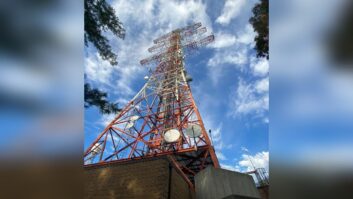The author is chairman of the Digital Radio Mondiale Consortium.
It was very interesting to read the article researched and penned by James Careless “Shortwave Radios Keep Up With Tech” in Radio World.
It was also high time to address the issue of SW transmissions, just when the death of radio and of shortwave, and even medium-wave, is being ventilated again, while the progress of streaming and podcasting is hugely hyped, again trumping global realities.
Maybe stressing the actual huge size of SW listening would have benefitted the article.
BBC World Service alone has an estimated weekly audience of 269 million, with radio delivering around 150 million. This top international broadcaster has 200 transmitter sites, of which four are high-power AM, with 12 others hired. Content is distributed to 800 locations globally (often using SW) for direct broadcast or inclusion in partner broadcasts. And AM services reach many tens of millions across Africa and Middle East, the future potential audience of DRM shortwave as well.
The Radio World piece was clearly aimed mainly at the enthusiasts, as indicated by the receiver prices mentioned. The average non-enthusiast listener who has a laptop with connectivity would probably just listen to radio via the internet.
There is definitely merit in portable SDRs, which (depending on price) will likely keep some of the audiences and make it easy for them to pick up analog shortwave but also DRM. India, China, Russia, U.K., even Brazil, Pakistan and other countries are testing, broadcasting or seriously considering shortwave DRM at the moment.
The natural and only son of analog SW, DRM, with its huge spectrum, energy and audio quality advantages, does not get a mention in the article, though. This is definitely a missed opportunity, as some of the big public broadcasters mentioned — BBC, All India Radio, Radio Romania etc. — are already in this space and report excellent reception and increasing listenership.
Most of the new DRM receiver solutions cater for both the analog and digital versions of shortwave reception. Work is afoot to deliver more affordable receivers aimed precisely at the huge and less affluent shortwave markets of Africa and Asia.





